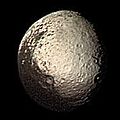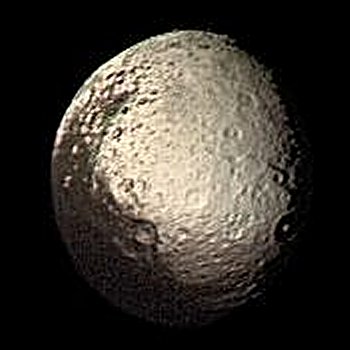Datei:Iapetus by Voyager 2 - enhanced.jpg
Iapetus_by_Voyager_2_-_enhanced.jpg (350 × 350 Pixel, Dateigress: 19 KB, MIME-Typ: image/jpeg)
Dateiversiona
Wensd auf an Zeitpunkt klickst, nacha konst a friaane Version lodn.
| Version vom | Vorschaubuidl | Dimensióna | Nutzer | Kommentar | |
|---|---|---|---|---|---|
| aktuell | 19:29, 4. Apr. 2005 |  | 350 × 350 (19 KB) | Smartech~commonswiki | *'''Iapetus by Voyager 2 spacecraft, August 22, 1981''' *same as Iapetus_by_Voyager_2.jpg but focused on the mooon and feature-enhanced. *original image caption: Saturn's outermost large moon, Iapetus, has a bright, heavily cratered icy terrain and a da |
Dateivawendung
Seitn wo de Datei nutzn:
Globale Dateinutzung
D'noochéfóiganden åndern Wikis vawénden dé Datei:
- Vawendung af ar.wikipedia.org
- Vawendung af be-tarask.wikipedia.org
- Vawendung af be.wikipedia.org
- Vawendung af ca.wikipedia.org
- Vawendung af de.wikipedia.org
- Vawendung af el.wikipedia.org
- Vawendung af en.wikipedia.org
- Vawendung af eo.wikipedia.org
- Vawendung af es.wikipedia.org
- Vawendung af eu.wikipedia.org
- Vawendung af fr.wikipedia.org
- Vawendung af gl.wikipedia.org
- Vawendung af hr.wikipedia.org
- Vawendung af it.wikipedia.org
- Vawendung af ja.wikipedia.org
- Vawendung af ko.wikipedia.org
- Vawendung af la.wikipedia.org
- Vawendung af lb.wikipedia.org
- Vawendung af lt.wikipedia.org
- Vawendung af lv.wikipedia.org
- Vawendung af ms.wikipedia.org
- Vawendung af mwl.wikipedia.org
- Vawendung af no.wikipedia.org
- Vawendung af pl.wikipedia.org
Weitere globale Verwendungen dieser Datei anschauen.



